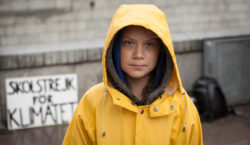
On 30 April 2021 A raging health crisis has failed to stop the implementation of climate-friendly projects subsidised by Japan in Cambodia.
These programmes are being, or will be, implemented under the expanded Joint Crediting Mechanism (JCM) Model Project of the Ministry of Environment Japan (MOEJ).
The JCM is a programme in which the Japanese government (through the MOEJ) partners with countries to reduce their emissions of greenhouse gases while promoting Sustainable Development Goals (SDGs).
It is also geared towards helping nations, particularly developing countries, achieve their SDGs and achieve zero emission status within a set period of time, according to the Khmeretimes report .
High-quality and effective technology transfers, assistance and subsidy for renewable energy projects in JCM partner-countries are the major components of this initiative. There is a corresponding carbon credit for greenhouse gas reduction, which is shared among governments and other participants. The higher the reduction, the more JCM credits they will receive.
Cambodia joined the JCM in 2014, becoming one of 17 countries that agreed to work with Japan to combat harmful levels of greenhouse gas emission and climate change. Thailand, the Philippines, Laos, Myanmar, Vietnam and Indonesia are the other Southeast Asian countries involved with JCM.
The ongoing installation of solar panels at the Canadian International School of Phnom Penh (CIS) is the latest and sixth JCM project to be implemented in Cambodia. It is being facilitated jointly by an international consortium consisting of Asian Gateway Corp, CIS, Overseas Cambodian Investment Corp (OCIC) and Kamworks, a leading solar energy company in Cambodia.
“As facilitators of this project, we are promising to deliver this project successfully to the best of our abilities, even in the middle of [a] pandemic,” reported Tomonori Kimura, founder and chief executive officer (CEO) of Asian Gateway and its local subsidiary, AG Asian Gateway (Cambodia).

The other five JCM projects in the Kingdom include improvements in the provincial water supply and sanitation.
Kimura said the programme is set for expansion in Cambodia, with more JCM projects on the way.
“We are proud of our contribution to Cambodia. Our first project together was with the International School of Phnom Penh (ISPP), and now CIS. As for other succeeding projects, we [are not ready to] name them for now, but there will be more such projects for Cambodia,” he said.
In the CIS project, a solar power system will be installed on the rooftop of four buildings. The total capacity output is about 1 megawatt.
CIS Head of School Jason Caruana pointed out, “With such capacity output, the school will be able to produce almost 40 percent of our electricity requirement. This will provide numerous benefits for the school, as well as providing a solid contribution to the Cambodian government’s commitment to halving carbon emissions by 2030.”

Kimura said “The most important thing is that students from CIS and other recipient schools will become more conscious about climate change and of the need to preserve and protect the environment. Nothing makes us prouder than being a part of the fight against climate change.”
This project is also a part of a Smart City that the OCIC is planning to establish and develop in the Koh Pich (Diamond Island) area of Phnom Penh.
Hok Chin, OCIC’s CEO in-charge of the CIS project, said. “In partnership with the project members and support from the MOEJ, this second project is finally set and ready to sail within the Smart City that is being developed in Koh Pich,.”
The project is ongoing in spite of the ongoing health crisis. “We want to show to the world that we can make it happen despite the difficult situation,” Kimura stressed.
The solar panels arrived at CIS two weeks ago and the new solar power system will be operational by the end of July, according to Arjen Luxwolda of Kamworks.
Greenhouse gas reduction will be calculated for the credit and a percentage of that will go to the Japanese government towards Japan’s emission-reduction target.
After being outpaced by many of its neighbours, Cambodia, in the last few years, has started to hitch onto the renewable energy “bandwagon”. Sweden, Japan and China are among the countries that are helping Cambodia achieve its renewable energy goals.




